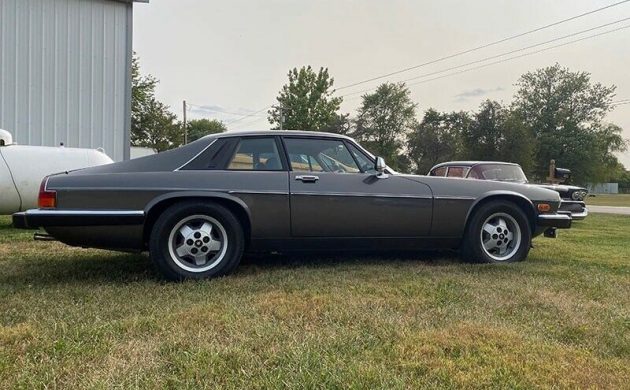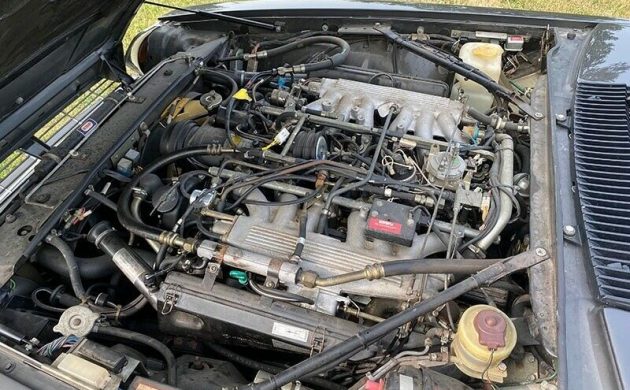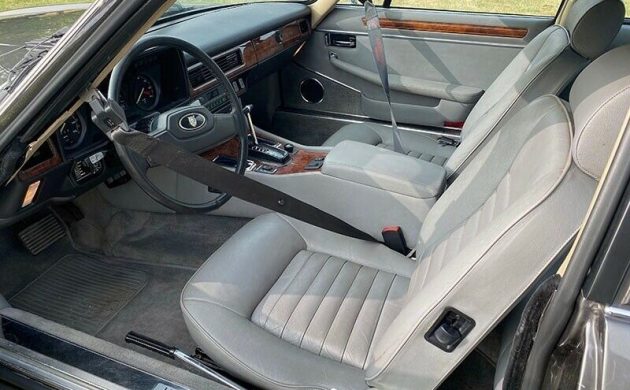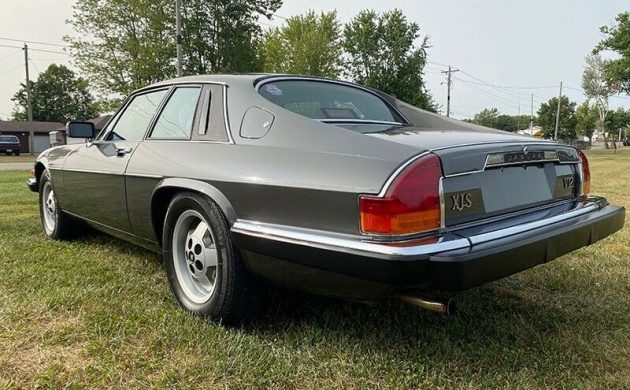If you look up the word “longevity” in the dictionary, you should, by rights, find a picture of the Jaguar XJS beside it. Originally designed as the long-awaited replacement for the E-Type, it remained in production for an incredible 20-years and seven months. This 1988 model is a stunning looking car, and it has recently emerged from storage. It was parked in a barn for two decades but has been returned to a roadworthy state. It has a few detailed items that will need to be attended to, but none of these sound like they will be particularly difficult. Those will be tasks for the next owner to tackle because the Jag has been listed for sale here on eBay. It is located in Clayton, Indiana, and with an incredible 62 bids submitted, the price has reached $6,100. This will be a “winner take all” proposition because this is a No Reserve auction.
When you delve into the company’s history, you begin to realize how lucky it is that Jaguar remains in existence today. At one stage, it was a part of British Leyland, which roughly translated, means potentially doomed. To gain an insight into what I mean, you need to examine the history of BL and see just how many brands managed to survive under their stewardship. You can count the number on the fingers of one hand. If Jaguar hadn’t have been floated off Leyland as an independent company in 1984, it probably would have joined the automotive dead. However, it survives to this day, and it was during these early days of independence, free from the shackles of British Leyland, that this particular XJS rolled off the production line. It is finished in Dorchester Gray, a color that seems to accentuate its long and sleek lines. The vehicle had spent 20-years in storage until emerging recently, and it seems to have survived the ordeal rather well. The owner says that the underside is clean and rust-free, and there are no signs of any rust problems in the panels. It is laser straight, with panel gaps that are tight and consistent. The paint holds a beautiful shine, with only a few scratches on the trunk lid as defects that rate a mention. The trim shines as nicely as the paint, as do the original alloy wheels. Topping off the package is glass that appears to be flawless.
I want to clear up one nasty rumor about the XJS right away: There is no truth to the story that Jaguar used a map of the London Underground when designing the plumbing and wiring in the engine bay of the XJS. Nor is the reverse true! This is not a place for the uninitiated to poke around because anything beyond basic maintenance tasks is best left to a professional. What we find under all of those hoses and wires is a 5.3-liter V12 that pumps out 262hp. This finds its way to the rear wheels via a 3-speed automatic transmission. Even though the XJS tips the scales at 4,041lbs, it should still be capable of covering the ¼ mile in 16.2 seconds. Point it at a straight piece of road, and it will finally run out of breath at 149mph. This Jag had been sitting in storage for more than 20-years, but the owner has returned it to a roadworthy state. He says that it runs and drives well, with no signs of smoke or odd noises. He suggests treating the vehicle to a full fluid change and some new tires but says that there have been no vices present in the weeks that he has been driving it once revived.
Even though the original intent had been for the XJS to replace the E-Type as a sports car, Jaguar developed a Grand Tourer. Interior appointments were more luxurious than sporting, and owners were made to feel special every time they slipped behind the wheel. The upholstery was courtesy of soft and supple leather, while the dash and other surfaces were treated to lashings of burled elm veneer. Throw in air conditioning, power windows, power locks, power seats, and cruise control, and life would be pretty pleasant behind the wheel. The owner says that all of these features work as they should, with two exceptions. The cruise doesn’t function, but he has chosen not to delve into that. The display on the radio/cassette player has the word “code” showing on it. This would be because the battery has been disconnected or gone flat while the car was parked. The buyer will have to contact a registered agent to obtain the unlock code to address this problem. Beyond that, the interior needs nothing. It presents superbly and would seem to support the owner’s belief that this XJS has a genuine 29,000 miles on the clock. It appears that he doesn’t hold documentation that verifies this. However, when you consider the car’s history and condition, I find the claim to be plausible.
In a world ruled by logic, there is no rational reason why the Jaguar XJS should have managed to soldier on bravely for nearly 21-years. It was borne out of an organization racked with industrial strife and bad management decisions and delivered to dealers in an era of massive inflation and rising fuel prices. By any measure, it should have been dead within 12-months. It wasn’t, and during its production life, Jaguar managed to convince more than 115,000 buyers that it was worth handing over their money to own one. For some years, they remained an unloved classic that could be bought for a song. Their popularity has grown in recent times, and the bidding on this one demonstrates that tidy examples will generate plenty of interest. That new home is not far away for this British classic, so would you be willing to roll the dice and submit a bid?





That under-hood photo above makes for a compelling desktop background on your PC.
I had one. The day I got it, the alternator went out. Two days later, the radiator started leaking, the engine overheated and pushed a valve seat into the head. Things continued like that until the day I sold it.
I had one, too, a ’76. I had no problems whatsoever for 2 years, then suffered the exact same problem with overheating. I was stationed in Tucson AZ and was heading home up a fairly steep hill on a reliably hot Tucson afternoon. I overheated it and a steel valve seat got sucked off of the aluminum head in into the combustion chamber.
I removed the right head and took it to a local machine shop. The cylinder wall was fine after a little careful honing. Machine shop bill and a gasket set was about $350. Again, I had no problems after that.
These V-12s are like working on any other engine – you remove stuff until you get to what you’re repairing … then “installation is the reverse of removal.”
Is this Jaguar that has a Separate cooling fan for the battery ?
I think that’s only found on the XJ12 sedan and coupe. My ’76 XJ12L had the battery fan … not sure if it worked!
I would never buy any vehicle with those dreaded automatic seat belts. I hate them. I pass on any car with them.
Our government at work. Who thought those were a good idea? Oh, that’s right, I remember!
These were better with the optional six cylinder engine, better by far. The 12 makes a beautiful sound, but will rarely run long enough for you to hear that sound. If this had an LS in it, by gosh, might be a nice buy, but this?
I removed everything Lucas. Weber carbs, MegaJolt ignition. I always prefer FI, but Lucas is a joke. Super car motor now. Rebody with a Devin and it’s fantastic. Takes 6 months to do, worth it!
I have a friend that loved to buy these cars with engine problems and swap a
small block chevy and 700r4 into them.
Instant reliability and even more fun! Now, as William said, drop in an ls and
you have a modern hotrod and if you breath on it a bit, you can go corvette hunting.
But did any of your XJS V12 come with four or five speed O WHAT FUN
Amazing vehicles, I’ve had several.
Lumpers don’t appreciate the smoothness of the V12, instead they halve the car’s value by stuffing in a SBC motor.
Yes, Jags need more maintenance and TLC than a domestic.
But the result is an ethereal experience that owners of lesser vehicles will never know.